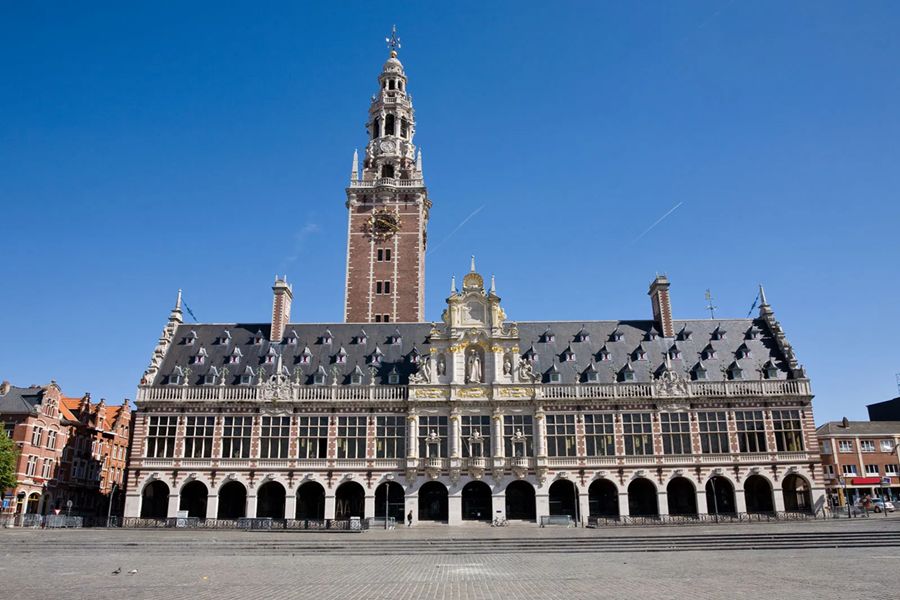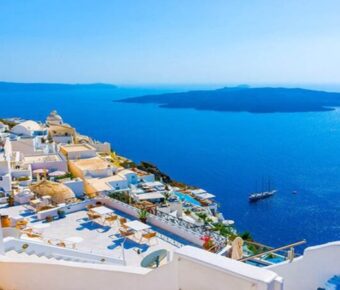
Antwerp vs Leuven: Which Belgian City Offers the Best Cultural Experience in 2025
Royal Antwerp and Oud-Heverlee Leuven create one of Belgium‘s most fascinating football rivalries. These two historic cities, separated by just 50 kilometers, bring their unique cultural identities to every match they play. The teams have faced each other multiple times in the 2023-24 season, with Royal Antwerp holding a slight edge in recent meetings, including a 3-2 victory in January 2024.
The city of Antwerp brings its diamond district glamour and port city grit to the rivalry, while Leuven counters with its university town charm and brewing heritage. Their next clash is scheduled for February 22, 2025, at the iconic Bosuilstadion in Antwerp, where passionate fans will create an electric atmosphere.
Football fans visiting Belgium can experience these historic cities beyond the pitch. Travelers can explore centuries-old architecture, world-class museums, and authentic Belgian culture in both destinations. Each city offers unique hotels and accommodations to suit any travel style.
Table of Contents
- Historical Context
- Antwerp’s Rich History
- Leuven’s Historical Roots
- Cultural Highlights
- Antwerp’s Art and Culture
- Leuven’s Academic Heritage
- Sports Rivalry
- Royal Antwerp FC’s Football Legacy
- Oud-Heverlee Leuven’s Rise in Sports
- Head to Head Record
- Economic Comparison
- Antwerp’s Economy and Business
- Leuven’s Knowledge Economy
- Gastronomy and Cuisine
- Sampling Antwerp’s Gastronomic Delights
- Leuven’s Culinary Scene
- Transportation and Accessibility
- Getting Around Antwerp
- Navigating Leuven
- Key Attractions and Activities
- Must-Visit Spots in Antwerp
- Leuven’s Top Attractions
- Frequently Asked Questions
- What are the key differences in the cultural attractions between Antwerp and Leuven?
- How do the academic institutions in Leuven compare with those in Antwerp?
- Can you highlight the historical significance of Antwerp versus Leuven?
- What are the unique local cuisines to try in Leuven and Antwerp?
- Could you describe the nightlife contrast between Antwerp and Leuven?
- In terms of transportation and accessibility, how do Antwerp and Leuven differ?
- Book Your Dream Experience
- More Travel Guides
Historical Context
These two Belgian cities have fascinating histories stretching back many centuries, with both playing major roles in shaping Belgium’s cultural and economic landscape.
Antwerp’s Rich History

Antwerp grew from a small settlement into one of Europe’s most important trading hubs during the 16th century. The city’s famous port helped it become the diamond capital of the world.
The Port of Antwerp changed everything for the city’s growth. Ships from across the globe brought exotic goods, making local merchants incredibly wealthy. Many built stunning mansions that still line the streets today.
During the Golden Age, famous artists like Peter Paul Rubens called Antwerp home. Their artwork fills the city’s museums and churches, showing off the city’s past wealth and culture.
Leuven’s Historical Roots

Leuven made its mark as a center of learning and brewing. The Catholic University of Leuven, founded in 1425, ranks among Europe’s oldest universities.
The city’s ties to beer run deep. The Stella Artois brewery started here in 1366, when the Den Hoorn brewery first opened its doors. Local brewers helped make Belgian beer famous worldwide.
Sadly, both World Wars hit Leuven hard. Much of its historic center needed rebuilding after heavy damage. The rebuilt Gothic-style Town Hall stands as a symbol of the city’s resilience.
The university’s ancient library rose again too. Today it holds over 5 million books and helps keep Leuven’s reputation as Belgium’s premier college town alive.
Cultural Highlights
Both cities offer distinct cultural experiences that showcase Belgium’s rich heritage. Antwerp shines as a bustling arts hub, while Leuven stands out for its historic university atmosphere and deep-rooted academic traditions.
Antwerp’s Art and Culture

The city pulses with creative energy through its many museums and galleries. The Royal Museum of Fine Arts houses masterpieces from Flemish painters like Rubens and Van Dyck.
The Fashion Museum (MoMu) puts Antwerp’s reputation as a fashion capital on display. The city earned this status thanks to the famous “Antwerp Six” designers who revolutionized Belgian fashion in the 1980s.
Street art adds splashes of color throughout the city, especially in neighborhoods like Zuid and Het Eilandje. These outdoor galleries showcase local talent and international artists.
Leuven’s Academic Heritage

The historic university buildings give Leuven its distinctive character. KU Leuven, founded in 1425, is one of Europe’s oldest universities and brings a youthful energy to the city’s streets.
The University Library, rebuilt after World War I, stands as a symbol of resilience. Its tower offers amazing views of the city’s skyline and gothic architecture.
Students fill the cafes and bars around the Old Market Square, creating a lively atmosphere. The city’s kotmadam statues – which honor the women who historically rented rooms to students – tell stories of university life through the ages.
Local breweries like Domus carry on centuries-old brewing traditions, mixing academic culture with Belgium’s famous beer heritage.
Sports Rivalry
The competition between Royal Antwerp FC and Oud-Heverlee Leuven stands out in Belgian football, marked by intense matches and growing rivalry in the First Division A. Their games often feature close scores and exciting tactical battles.
Royal Antwerp FC’s Football Legacy

Royal Antwerp FC stands as Belgium’s oldest football club. The team plays at the historic Bosuilstadion, their home since 1923.
Their trophy cabinet includes 5 Belgian league titles. The club’s recent success saw them win the Belgian Cup in 2020, marking a strong return to form.
The team brings a mix of youth talent and seasoned pros to their matches. Their style of play focuses on strong defense and quick counterattacks.
Oud-Heverlee Leuven’s Rise in Sports

OH Leuven joined the top flight more recently but has made steady progress. The team earned promotion to First Division A in 2020.
Their home ground, Den Dreef stadium, has become a tough place for visiting teams. The stadium’s atmosphere helps push the team to better performances.
Recent investments in youth development have started to pay off. Young players like Ewoud Banzuzi show promise for the team’s future.
Head to Head Record
Recent meetings between these teams have been tight affairs. The latest clash in December 2024 saw Antwerp win 1-0.
In October 2024, goals from Ondrejka and Mitrović lit up their meeting. Both teams showed attacking flair in that game.
Stats from recent games:
- Goals per game: 2.3
- Clean sheets: Antwerp 3, Leuven 2
- Win ratio: Antwerp 60%, Leuven 20%, Draws 20%
Their matches often feature strong midfield battles and tactical shifts. Each game brings new twists to this growing sports rivalry.
Economic Comparison
Antwerp and Leuven show distinct economic profiles, with costs of living differing by about 9% between the two cities. Living expenses like rent, food, and entertainment create unique financial landscapes in each location.
Antwerp’s Economy and Business

Antwerp stands as Belgium’s major commercial hub, centered around Europe’s second-largest port. The city demands higher living costs than Leuven, with basic expenses like dining out costing up to 34% more. A simple dinner for two at a neighborhood restaurant runs about €55.
The diamond trade remains a key industry, with the city handling roughly 84% of the world’s rough diamonds. Maritime trade and logistics create thousands of jobs through the port’s activities.
Local purchasing power sits lower than in Leuven, meaning salaries don’t stretch quite as far. Rent prices run slightly below Leuven’s rates, offering some relief to residents’ budgets.
Leuven’s Knowledge Economy

Leuven thrives as a university town with strong ties to research and innovation. The city offers better value for money, with groceries costing 11% less than in Antwerp. Restaurant prices run nearly 20% cheaper too – a neighborhood pub dinner costs around €41 for two.
The presence of KU Leuven drives much of the local economy. The university attracts significant research funding and spawns numerous tech startups. Many graduates stay to work in the city’s growing biotech and healthcare sectors.
Local purchasing power exceeds Antwerp by 13.2%, meaning residents can buy more with their earnings. The combination of lower costs and strong salaries makes Leuven financially attractive for many professionals.
Gastronomy and Cuisine
Both cities offer unique food experiences that showcase Belgian culinary traditions. Antwerp brings high-end dining and seafood specialties, while Leuven serves up authentic student-friendly fare and craft beer.
Sampling Antwerp’s Gastronomic Delights

Antwerp’s dining scene mixes elegant restaurants with casual eateries. The city’s port location means fresh seafood features prominently on many menus, especially the famous moules-frites (mussels and fries).
The trendy Zuid district houses some of the city’s most innovative restaurants. Many chefs put creative spins on Belgian classics like waterzooi and stoofvlees.
Street food thrives at places like the Antwerp Market Hall, where visitors can sample local specialties like paling in ‘t groen (eel in green sauce) and kibbeling (fried fish).
Leuven’s Culinary Scene

Leuven’s large student population shapes its food culture with plenty of budget-friendly options. The city’s restaurants tend to be more casual and laid-back than Antwerp’s.
The Oude Markt square features dozens of restaurants serving traditional Belgian dishes. Local favorites include speculoos-flavored desserts and fresh vlaai (fruit tarts).
Students flock to the many sandwich shops and casual bistros around the university area. The city’s connection to AB InBev means you’ll find excellent beer-paired dishes at many establishments.
Local food markets pop up regularly in Leuven’s city center, offering fresh produce and regional specialties at lower prices than Antwerp.
Transportation and Accessibility
Both cities offer excellent public transit networks and multiple ways to get around, making them easy to explore for visitors and locals alike.
Getting Around Antwerp

Antwerp’s transportation system makes moving through the city simple and quick. The extensive public transit network includes buses, trams, and trains that connect all major areas.
The city’s main train station links Antwerp to other Belgian cities and international destinations. Regular trains run to Brussels, Paris, Amsterdam, and many other European cities.
De Lijn operates the local bus and tram services. These cover the entire city with frequent service during peak hours. Visitors can buy single tickets or multi-day passes for all public transport.
The city center is very walkable. Many streets are car-free, which makes exploring on foot pleasant and safe.

Leuven sits at a perfect spot where two major highways meet – the E40 and E314. This makes driving to the city quite simple.
Train travel to Leuven is fast and reliable. The trip from Brussels takes just 20 minutes, while Antwerp is 45 minutes away. The city also has direct rail connections to Paris, Amsterdam, and Düsseldorf.
The local bus network covers all parts of Leuven. De Lijn runs frequent services throughout the day.
Bikes are very popular in Leuven. The city has many dedicated bike lanes and rental options. Most attractions are within easy cycling distance.
Walking is another great choice. The compact city center means most sights are just a short stroll apart.
Key Attractions and Activities
Both cities pack plenty of fascinating attractions that show off their unique character and rich history. Each offers visitors distinct experiences, from world-class museums to stunning architecture.
Must-Visit Spots in Antwerp

The Antwerp Zoo ranks among the oldest zoos worldwide, featuring modern facilities and amazing wildlife exhibits. Its historical setting adds extra charm to any visit.
The Port of Antwerp gives visitors a glimpse into one of Europe’s busiest shipping hubs. Its massive scale and constant activity make for an impressive sight.
Notable Museums:
- Museum aan de Stroom (MAS) – A striking red building with panoramic city views
- Rubens House – Former home of the famous painter
- Diamond Museum – Showcasing the city’s famous diamond trade
The Cathedral of Our Lady dominates the skyline with its Gothic architecture and houses several masterpieces by Rubens.
Leuven’s Top Attractions

The stunning Gothic architecture of Leuven’s Town Hall makes it a must-see landmark. Its intricate details and stone carvings tell stories from the city’s past.
St. Peter’s Church stands as a prime example of Brabantine Gothic style. The church holds valuable art pieces and religious artifacts.
Popular Sites:
- Old Market Square – Lined with cafes and restaurants
- University Library – Beautiful building with tragic WWI history
- Grand Beguinage – UNESCO heritage site with peaceful streets
The KU Leuven Botanical Garden offers a peaceful retreat with rare plants and beautiful walking paths.
Frequently Asked Questions
Antwerp and Leuven each shine with distinct attractions, history, and local flavors that make them special Belgian destinations. The cities offer unique experiences in everything from art to food to student life.
What are the key differences in the cultural attractions between Antwerp and Leuven?
Antwerp stands out as a major art and fashion hub with its Royal Museum of Fine Arts and trendy design districts. The city’s Diamond District adds a sparkle of luxury you won’t find elsewhere in Belgium.
Leuven’s culture centers around its historic university buildings and Gothic architecture. The stunning Town Hall and St. Peter’s Church create perfect photo spots for visitors.
How do the academic institutions in Leuven compare with those in Antwerp?
KU Leuven ranks as one of Europe’s oldest universities, dating back to 1425. The student population gives the city a youthful energy, with about 50,000 students during the school year.
The University of Antwerp spreads across several modern campuses. It’s known for its business and maritime studies programs, matching the city’s role as a major port.
Can you highlight the historical significance of Antwerp versus Leuven?
Antwerp grew rich as Europe’s main trading port in the 16th century. The city’s Golden Age left behind stunning guild houses and the magnificent Cathedral of Our Lady.
Leuven served as a medieval center of learning and beer brewing. Despite heavy damage in both World Wars, many historic buildings have been carefully restored.
What are the unique local cuisines to try in Leuven and Antwerp?
Leuven’s food scene focuses on traditional Belgian dishes and student-friendly prices. The city is famous for its Stella Artois brewery and countless beer cafes.
Antwerp offers high-end dining spots and multicultural food markets. Local specialties include hand-shaped chocolates and fresh seafood from the North Sea.
Could you describe the nightlife contrast between Antwerp and Leuven?
Antwerp’s nightlife spreads across various neighborhoods, from sleek cocktail bars to underground clubs. The South District and Harbor area stay busy until early morning.
Leuven’s evening scene centers around the Old Market square. Students pack the bars and pubs, creating a lively but laid-back atmosphere.
In terms of transportation and accessibility, how do Antwerp and Leuven differ?
Antwerp connects to major cities through its central station and port. The city has extensive tram lines and bike paths that make getting around easy.
Leuven sits just 20 minutes from Brussels by train. The compact city center means most attractions are within walking distance.



